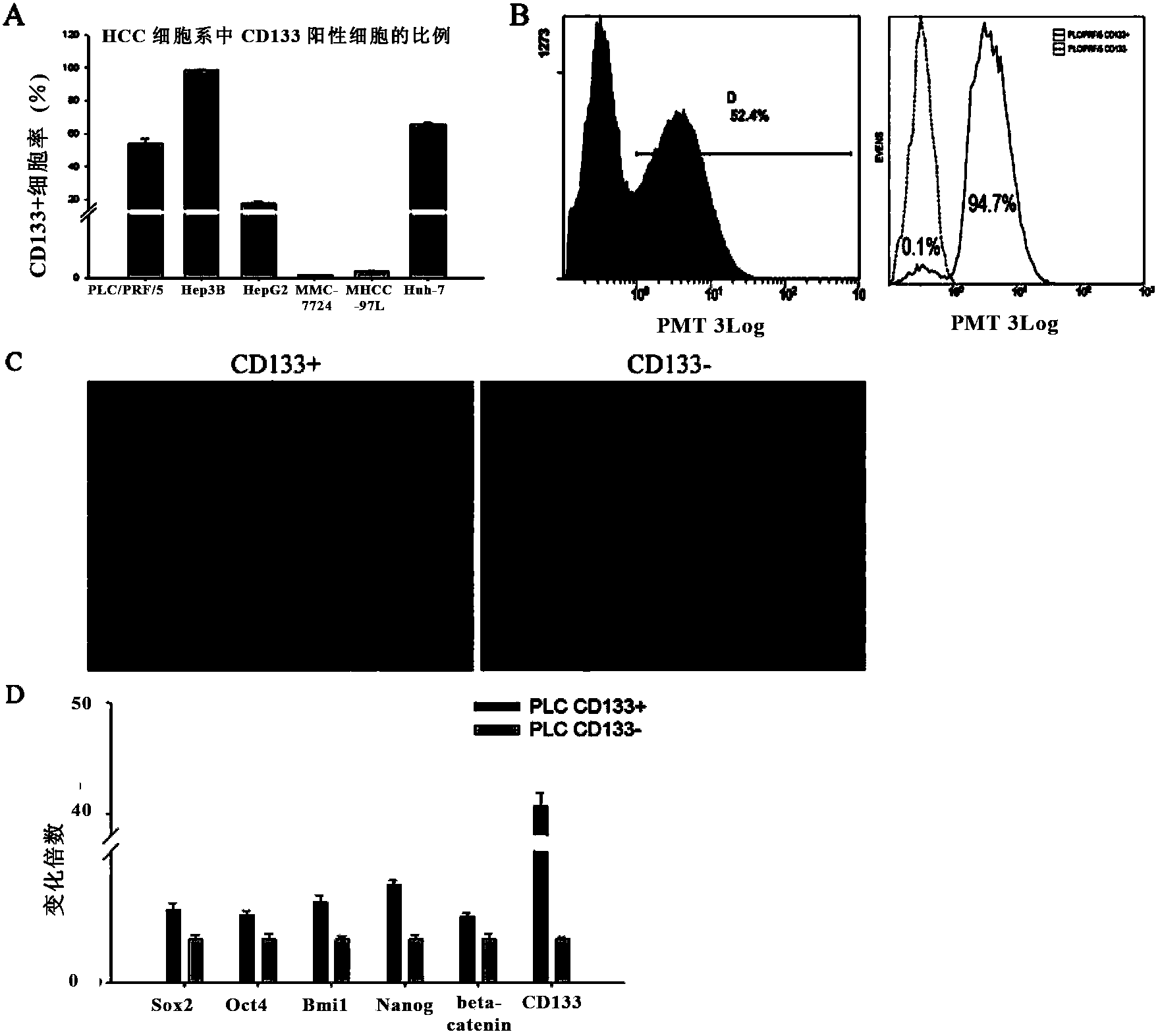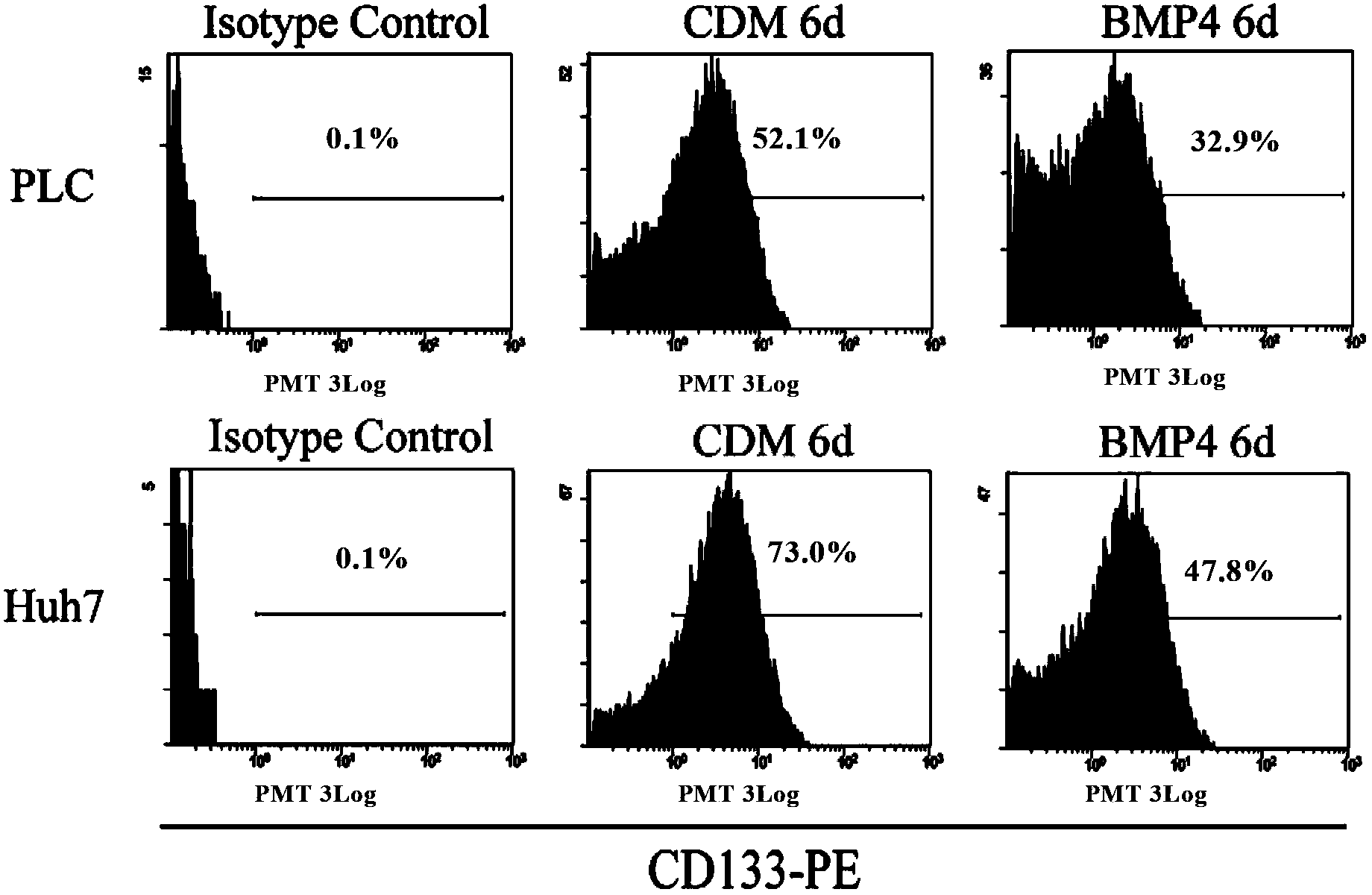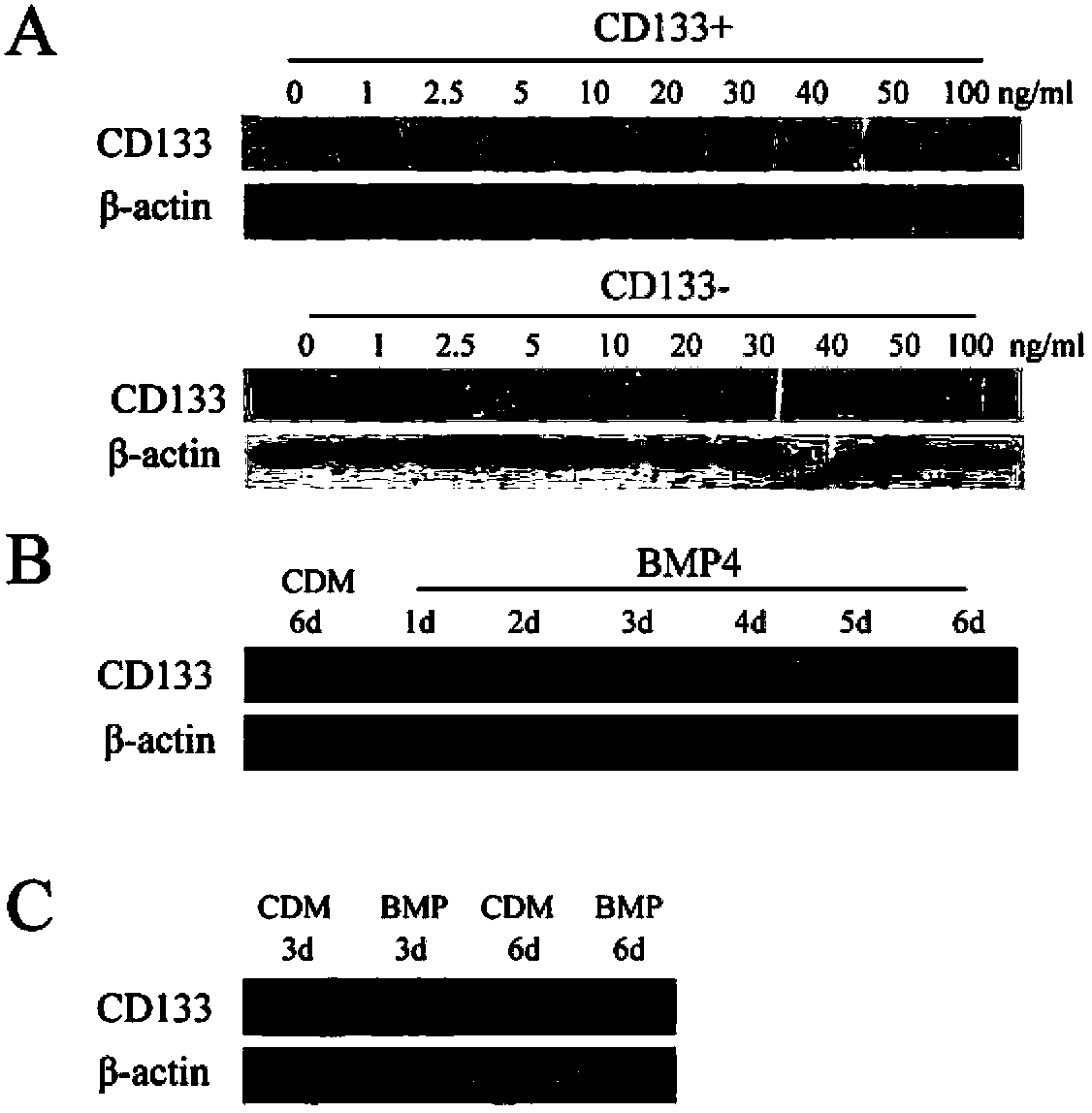Application of bone morphogenetic protein 4 in cancer inhibition
A technology for inhibiting liver cancer and protein, applied in the field of biopharmaceuticals, can solve the problems of liver cancer CSC differentiation and its regulatory mechanism is not very clear.
- Summary
- Abstract
- Description
- Claims
- Application Information
AI Technical Summary
Problems solved by technology
Method used
Image
Examples
Embodiment 1
[0190] Exogenous high concentration of BMP4 can induce down-regulation of CD133 protein expression in liver cancer cells
[0191] Mammalian liver development is regulated by a variety of growth factors. In order to screen a large number of growth factors that can induce the differentiation of liver CSCs, the inventors first analyzed and detected different liver cancer cells by flow cytometry in this example. The positive rate of CD133 protein expression in the line ( figure 1 A), the PLC / PRF / 5 cell line with a higher positive rate was selected as the screening cell, and the CD133+ / - liver cancer cell group with a sorting purity greater than 95% was obtained by flow cytometry ( figure 1 B).
[0192] The inventors detected the sorted CD133+ liver cancer cells, and found that the CD133+ cell population in the PLC / PRF / 5 cell line had higher non-adherent growth and self-renewal abilities than the CD133- cell population, and its stem The expression level of sex-related genes is al...
Embodiment 2
[0196] BMP4-induced reduction of CD133 protein expression in liver cancer cells is concentration- and time-dependent
[0197] In order to further observe the effect of BMP4 on liver cancer cells, especially liver cancer CD133+CSCs, in this example, the inventors treated PLC / PRF / 5 cells with different concentrations of BMP4 within the range of 0-100 ng / ml.
[0198] The results of Western Blot showed that BMP4 treatment at a concentration above 30ng / ml for 6 days could effectively induce a decrease in the expression of CD133 protein in the CD133+ liver cancer cell population, and this expression down-regulation was the strongest in the 100ng / ml BMP4 treatment group, but at the BMP4 concentration When it reaches 50ng / ml, it can already cause enough obvious effects ( image 3 A). The inventors chose a BMP4 concentration of 50 ng / ml to carry out subsequent experiments. At the same time, different concentrations of exogenous BMP4 did not cause changes in the expression of CD133 pr...
Embodiment 3
[0203] Effects of exogenous BMP4 on the proliferation and death of liver cancer cells
[0204] In this example, BrdU incorporation experiments were used to detect the effects of adding 0-100 ng / ml of exogenous BMP4 on the proliferation of PLC / PRF / 5CD133+ / CD133- cells.
[0205] The results showed that 10ng / ml and 20ng / ml BMP4 could promote the proliferation of PLC / PRF / 5 cells, but 50ng / ml and 100ng / ml BMP4 could have a certain inhibitory effect on the proliferation of CD133+ liver cancer cells. The effect is similar to that in the CD133+ cell group ( Figure 4 A).
[0206] In order to observe the effect of BMP4 on the apoptosis of liver cancer cells, the apoptosis rate of PLC / PRF / 5 cells after BMP4 treatment for 3 days was detected by Annexin V / 7-AAD double labeling method.
[0207] The results showed that BMP4 treatment failed to significantly affect the apoptosis of liver cancer cells ( Figure 4 B).
PUM
| Property | Measurement | Unit |
|---|---|---|
| diameter | aaaaa | aaaaa |
Abstract
Description
Claims
Application Information
 Login to View More
Login to View More - R&D
- Intellectual Property
- Life Sciences
- Materials
- Tech Scout
- Unparalleled Data Quality
- Higher Quality Content
- 60% Fewer Hallucinations
Browse by: Latest US Patents, China's latest patents, Technical Efficacy Thesaurus, Application Domain, Technology Topic, Popular Technical Reports.
© 2025 PatSnap. All rights reserved.Legal|Privacy policy|Modern Slavery Act Transparency Statement|Sitemap|About US| Contact US: help@patsnap.com



